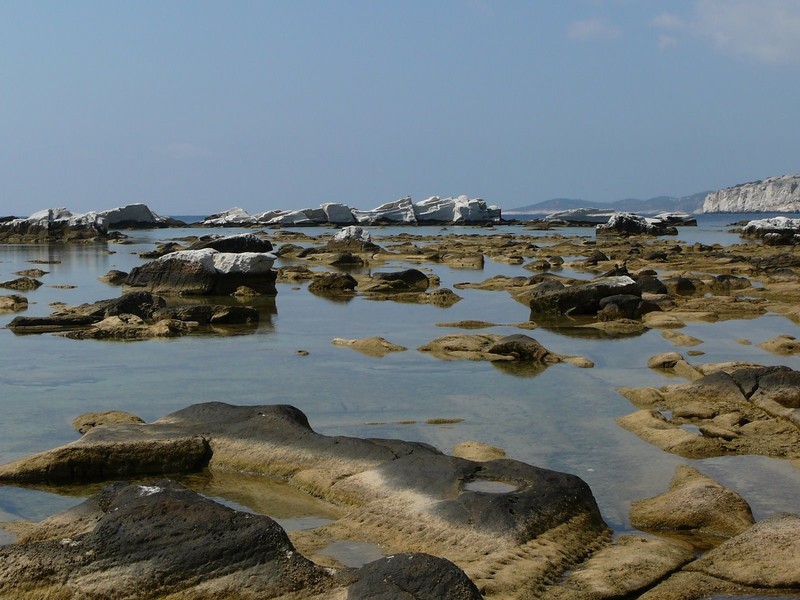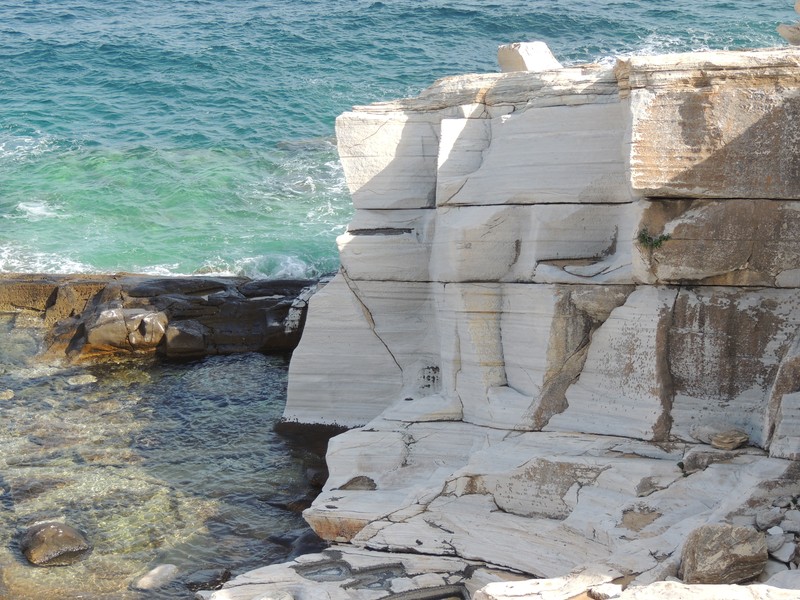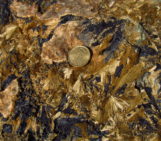This week’s Imaggeo on Mondays image was taken by Prof. Konstantinos Kourtidis, in Alykes, along the southern coast of Thassos island, where he photographed the beautifully white marbles that outcrop along the coastline. The Greek Island of Thassos is located in northeastern Greece, close to the coast of Thrace in the Aegean Sea, although geographically it belongs to the Macedonia region. There is geological evidence to suggest that at one time, the island was joined to the mainland.
“The island is formed of alternating marbles, gneisses and schists” explains Konstantinos, “in the southern Thassos area, where this image was taken, Palaeozoic (around 400 million years in age) and Mesozoic metamorphosed rocks of the Rhodopi Massif and more recent sedimentary Miocene formations (around 25 million years old) are exposed.” The sediments in this area are dominated by conglomerates, sandstones and argillaceous sands.
Banded iron formations, also known as BIFs, are repeated thin layers of iron-rich material which are alternated with shales and/or silica rich cherts. There are numerous occurrences of BIFs across Thassos island and this is interesting because BIFs are typical sediments of the Precambrian rock record and can indicate the presence of rocks which are in excess of 3 billion years old! It is unusual to find BIFs in the younger rocks record. On Thassos Island their formation is associated with changes in the depositional environment and climate.
During the formation of BIFs, volcano-sedimentary units become heavily mineralised and rich in iron and manganese oxides. In addition the island has dense accumulations of zinc and lead. As a result there is a long mining history on Thassos, dating back to 13,000 BC. The marbles seen in today’s Imaggeo on Mondays image belong to an ancient mine at sea level which was “exploited given the excellent quality of the marbles” states Konstantinos. The stone has been used in art projects, monuments and the building of numerous ancient temples.

Ancient marble quarry in Thassos, Eastern Macedonia, Greece. (Credit: Ioannis Daglis via imaggeo.egu.eu)
Given the islands rich archeological and geological heritage the Greek Institute of Geology and Mineral Exploration (IGME) has produced a geological guide for the southern part of the island, which also includes 4 geotrails and is available online.


